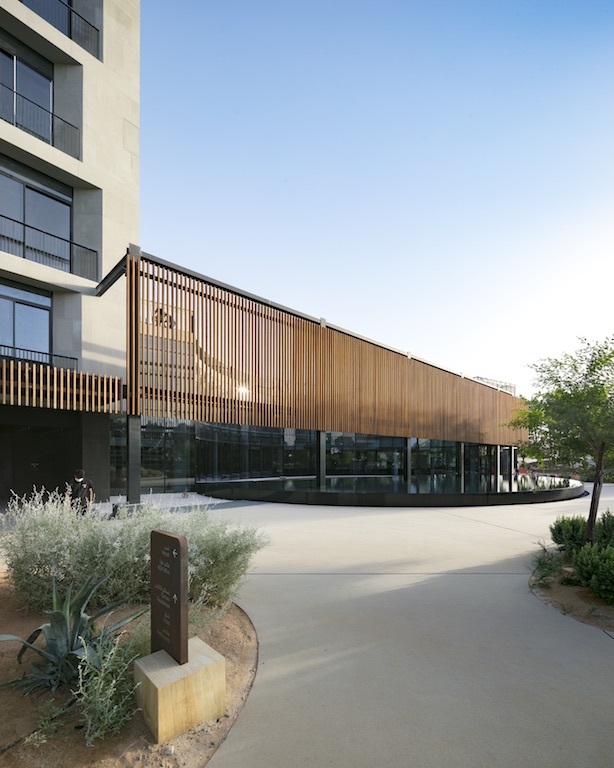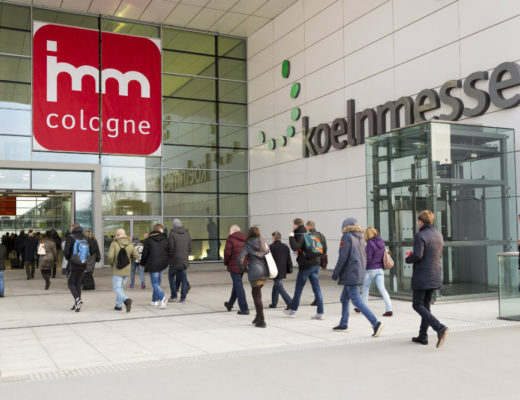Dubai-based T.ZED Architects has designed wrapped ‘KOA Canvas’, a new residential community in the emirate which aims to redefine modern city living by reinterpreting the public realms and encouraging social interactions.
T.ZED Architects’ design approach was anchored in the investigation of the site itself, the opportunity of responding to a diverse set of expectations and programmes – in such a non-typical mixed-use development, as well as materialising the client’s vision into a forward-thinking architectural language and an urban catalyst for a new type of neighbourhood in a city like Dubai.
The project also presented the architects with an opportunity to identify a balance between a more traditional culture dictated by an existing framework – to be given a new life – and a modern one anticipating social customs in the contemporary context such as internal courtyards and modern majlis.
KOA Canvas documented the successful and sustainable transformation of an existing office building into a thriving urban space for communal activities alongside the creation of an additional two new-built structures, with a variety of programmes that express the contemporary architecture of the region. Despite Dubai’s natural desert landscape, the design approach for such a wider context led T.ZED Architects to address the architectural proposition by absorbing and infusing the lush environment surrounding the site. This is highly reflected in the materiality chosen for the overall mixed-use development.
According to T.ZED Architects, the design brief presented by the client was specific yet compelling. The overall inspiration for the project came from the context and the forward-thinking programme of the project. The opportunity to intervene architecturally within an existing raw concrete structure while designing two new adjacent buildings allowed them to investigate how a sensible, seamless and successful conversation between the two different buildings could be established. In addition, the scale of the project, the design process, and the high-level outcomes led T.ZED Architects to investigate the brief on many levels.
“The eco-system and the site, the diverse set of expectations for a non-typical mixed-use development and last but not least the client’s passionate vision were the greatest influences. From an architectural perspective, embedding nature into modern residential areas was also the most compelling driver. This level of accessibility, integration and ‘seamless indoor-outdoor living’ was a great design motivation and inspiration to us. This attractive prospect to redefine the modern
language of buildings fits with our practice’s ambition to develop a contemporary
architectural framework that is relevant and contextual to this region.” – Tarik
Al Zaharna, founder and director, T.ZED Architects
Thermally-modified tulipwood was used primarily as a shading element to prevent overheating of the double-height co-working, and closed office spaces. The south-facing and east elevations were clad in vertical TMT louvers that are operable when in close proximity to office windows. This vertical element offers shade to an outdoor amphitheater and creates a clear-cut line between the water feature and usable landscape. As the TMT wraps around the building to areas that receive less direct sunlight, the vertical turns to horizontal in order to create an extended pergola for shading of social programmes on the ground floor. In plan, the TMT is offset from the building, tracing the sun direction as well as architectural programme of walkways, entrances, and restaurant terraces.
“One of T.ZED Architects’ key architectural values is materiality and the importance of experimentation with natural materials to the extent of manipulating and enhancing their natural qualities to accommodate the climate and the general context. With KOA Canvas, we have proudly introduced a more innovative approach to designing buildings with natural materials, whose rationale deepens the vision of the programme sought by the whole project. Such an investigation allowed us toclaim that the harsh environment – typical of the Gulf region – is actually conducive to revive and maximise the use of natural resources to the benefit of a physical contemporary structure while bringing harmony to human needs and enhancing human experiences,” added Zaharna.
Photos: Mark Goodwin and Anique Ahmed
You might also like:
OF Studio wins competition to design undulating desert landscape feature at Dubai Creek Harbour
Dubai’s X-Architects wins competition to design luxury desert resort in Saudi Arabia’s Empty Quarter
Kohn Pedersen Fox to design luxury residential tower in Bangkok











